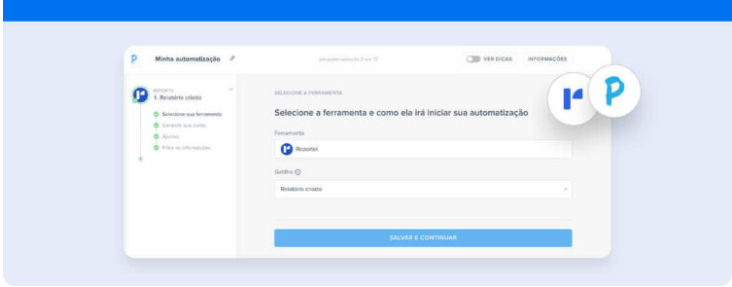This article is a complete guide on what being a Social Media Manager entails, the daily work responsibilities and how to become one.
Social Media Manager is one of the most coveted professions of our day. More and more businesses have been jumping on the bandwagon by investing in digital marketing and specific social network content.
After all, these channels are present in many people’s lives. Not only are they a means of keeping updated on brands and new products, but they provide a closer relationship among all sorts of businesses and consumers.
With the increase in digital marketing and countless opportunities for Social Media professionals, it’s no wonder people want to understand exactly what it takes to be one. You can find out in this article. Keep reading!
Learn about the Social Media Manager profession
First, let’s find out who Social Media professionals are. They’re also known as Social Media Analysts and are responsible for developing strategies and content for the widest range of social networks possible, like Instagram, Facebook, TikTok, Twitter, LinkedIn, and others.
In other words, a position that requires a strategic and creative profile to advertise through content that’s in line with the brand persona, identify trends and use what works best for each client.
So besides posting for and updating profiles, Social Media professionals need to monitor the results of metrics like reach and engagement and use that data for more efficient planning.
Putting it that way can make it a bit confusing, right? But don’t worry! Here’s a guide to help clear up doubts about the duties of Social Media professionals.
What do Social Media professionals do?
When it comes to the activities of Social Media professionals, we need to first understand how each of their tasks affects the next. Tasks are complementary, and the goal is to get the best results for clients.
In short, they involve a cycle of content planning, production, network programming, monitoring engagement, and analyzing results which are directly linked to new digital strategies.
Here’s what’s done in each phase and how they are closely related to social media management.
1. Planning content
To get into working in social media, you first need to plan content. That involves setting and organizing stages to guide producing posts.
If you’re starting a new project, you’ll need more detailed planning to work on the positioning of brands across the networks. The first stage is planning, and should include:
- Digital marketing objectives;
- Study and defining of the brand personas;
- Channels to work with (and that resonate with your audience);
- Editorials with the content to be covered on social media;
- Weekly or monthly posting frequency;
- Visual identity to be used in the art of posts;
- Posting schedule (you can decide on the first posts to present to your client in the planning template).
One of the best tools for that part is the social media briefing, as it requires that clients give you the necessary information about their businesses and goals.
Once approved, the social media planning can be put to use for projects. And through your posting schedule, you can update your plans regularly, ensuring that content is reaching the right audience.
2. Producing Content
Once social media planning is done, it’s time to start producing the content you put into the schedule. You’ll need to consider channels, editorials, and who you’ll need to speak with.
If you’re part of an agency, social media managers will be in charge of writing briefings for posts to send to the designer with relevant information like texts in creatives, visual references, formats, and anything else that might help. Besides that, they’ll also write captions to go with the images or videos.
Many times, especially if you’re a freelancer, you may also be in charge of the actual design. That’s why many social media managers use tools to help make it easier to create art online.
3. Scheduling posts
Once clients approve content (when needed), it’s time to get to the scheduling part. Posts should be scheduled for automatic posting on specific dates in your timeline.
Some platforms aid the production of art for posts and videos and have free tools for scheduling posts. With Meta Creator Studio, you can schedule posts for the Instagram or Facebook feed and stories. They’ll help speed up the process and make for a more productive work routine.
Some social media professionals also take care of sponsoring social media posts. So, you can include those ads in your schedule.
4. Monitoring engagement
After scheduling, you’ll need to monitor their social network engagement. In other words, follower interaction (likes, comments, shares, and direct messaging).
If there is interaction, Social Media managers must reply quickly to help strengthen the brand’s relationship with its audience. That’s fundamental to social media management, whether the feedback is positive or negative.
5. Analyzing results
Last comes the job of analyzing the performance of each post. You’ll be evaluating reach, engagement, growth, and interactions with profiles, content that stood out as far as performance in a specified period, and other data relevant to individual clients.
The more specific the analysis, the more insight you can extract to help plan content. Then the cycle begins again, and the path to reaching goals becomes even more strategic.
You can also capture metrics more efficiently with reporting software like Reportei. Besides increasing the productivity of your day-to-day routines, our tool also makes it easier to convey results to clients and gives them confidence regarding working with you.
How to become a Social Media Manager
Now that you already know what a Social Media Manager does, maybe you’re wondering how to become one.
First, you need to take interest in social networks, have an established, regular digital presence, and keep up to par on ensuing trends in every channel.
Besides that, you’ll need to master copywriting and be creative. That’s why it’s common to find Social Media professionals who took journalism, Advertising and Propaganda, Education, and others that involve writing skills.
Last but not least, you’ll need good analytical skills to help you understand results and extract insights on the most relevant information for clients.
By the way, we can help you start. Reportei Academy has quite a few free courses that will help you hone your social media analysis skills.
There are two complementary, free accreditations for becoming a Data-Driven Analyst equipped with knowledge about metrics, data interpretation, and reporting.
Sign up for the opportunity now to begin or continue your path to becoming a Social Media professional.



